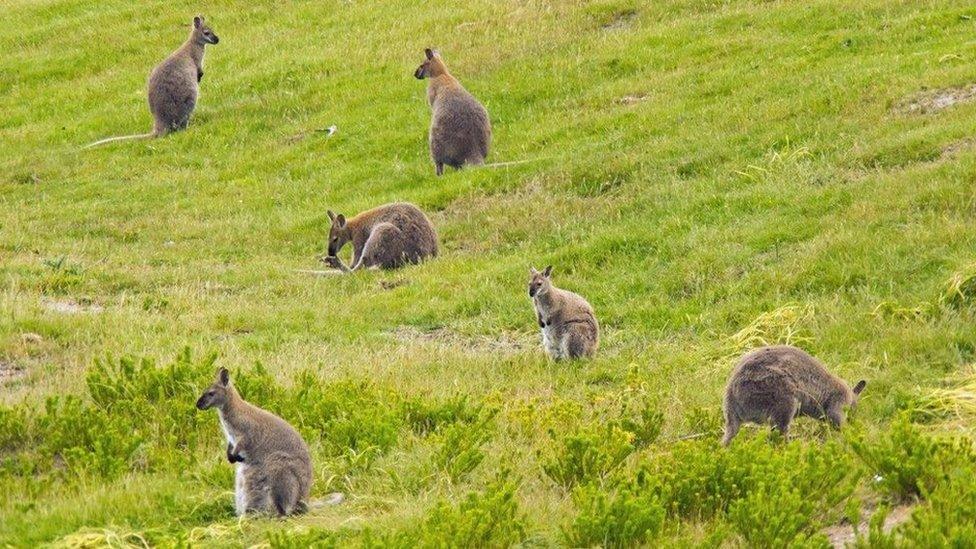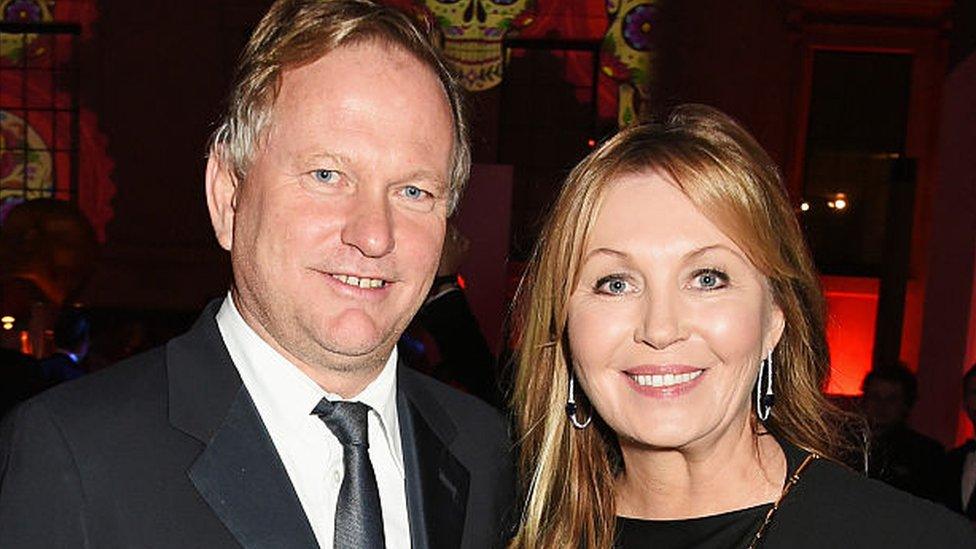Kirsty Young and the deserted island wallabies
- Published

Inchconnachan Island went up for sale in 2020
Former Desert Island Discs presenter Kirsty Young's plans for an uninhabited Loch Lomond island have raised questions about the future of its famous wallaby population.
There have also been objections from the Woodland Trust against plans to chop down trees on Inchconnachan Island, which the Scottish radio and TV presenter and her entrepreneur husband Nick Jones bought in 2020.
The 103-acre island, which had been owned by the Colquhoun family since the 14th century, is accessible by boat from the nearby village of Luss.
Young and Jones, the founder of private member' club chain Soho House, hope to build a "world-class" habitat and tourist attraction.
But many are concerned this could threaten the future of the marsupials - who have lived on the island for almost 80 years.
The couple have dismissed this and say they will consider relocating the wallabies instead.
They said they recognised and respected the island's historic woodlands and natural beauty but noted that the habitat was in a poor and declining condition because of an increasing number of visitors.
How did the wallabies get there?

Wallabies are native to Australia
The animals are thought to have been introduced by Fiona Bryde Gore, Lady Arran Colquhoun, at the end of the World War Two.
They are said to have been transported north from her marital home in Hemel Hempstead, Hertfordshire, where she also kept pot-bellied pigs, llamas and alpacas.
The wallabies, which are native to Australia, have thrived on the island ever since, surviving by eating oak, holly and birch.
Over the years a number have been gifted as presents and in 2016 a farmer believed he spotted one in the Borders countryside.
About 60 wallabies are thought to roam the island, which is an area of Special Scientific Interest and a conservation area.
What do the owners plan to do?

Nick Jones and Kirsty Young bought the island
Kirsty Young and Nick Jones purchased the island for £1.6m after it went up for sale in 2020.
The couple submitted plans, external in December 2021 to build a new lodge as short-term holiday accommodation, as well as a boat house, paths and a boardwalk - this would involve the demolition of a derelict colonial-style timber bungalow dating from the 1920s.
They also hope to remove "invasive" or "exotic" species.
A statement in the document reads: "We fully recognise, and respect, the fact the island is a beautiful and sensitive place, well protected for its historic woodlands, habitat and natural beauty.
"We equally see it is well recorded that very little habitat or visitor management has taken place over the past decade or more and as a result the habitat is in a declining poor condition and under growing pressure from an increasing number of visitors and anti-social behaviour."
They later told the The Times, external they were considering "relocating" the wallabies.
What are the criticisms?
A petition to "save the wallabies" was launched in January accusing the couple of planning to "eradicate" the wallaby population through a cull.
More than 63,000 people have since signed the online document, which called on the Scottish government to pass legislation to "protect both the wallabies and their habitat".
Naturalist and TV presenter Chris Packham told the Sunday Times a cull of the wallabies would "court controversy" and he thought there wouldn't be any problem in finding them a new home.
However, 24-year-old marine science student Craig Morrison, who launched the original petition, said moving the population would be "like relocating Nessie" as they were part of the island's "mystique".
Woodland Trust Scotland has also objected to the plans as the building work would involve cutting down trees.
The Luss and Arden community council said plans should be deferred until there is an agreement reached with the RSPB as they believed there is an osprey nest in the proposed lodge site, which "must be protected".
Related topics
- Published9 July 2020
